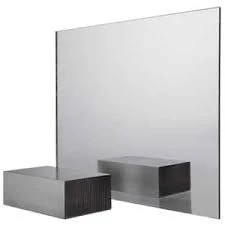

Innovative Glass Technology The Clear-to-Frosted Transformation
In recent years, the world of architectural design and interior decoration has witnessed a remarkable shift towards innovative materials that prioritize both aesthetics and functionality
. One such cutting-edge invention is the glass that switches from clear to frosted—a technology that has the potential to revolutionize how we perceive privacy and light in our living and working spaces.At first glance, the concept of glass that can modify its transparency might seem like something out of a science fiction novel. However, advancements in smart glass technology have made this idea a reality. This special type of glass utilizes electrochromic or SPD (Suspended Particle Display) technology, allowing it to change its state at the touch of a button or through a programmed setting. When activated, the glass transitions from a crystal-clear state that permits unobstructed views to a frosted finish that enhances privacy.
The applications for this transformative glass are myriad. In residential architecture, homeowners can enjoy the luxury of having an open, airy space that is well-lit during the day, while still having the option to create intimate and private environments at night. Imagine a living room adorned with large floor-to-ceiling windows that can seamlessly change from transparent to frosted when entertaining guests or during moments of reflection and solitude. This versatility not only improves comfort but also enhances the ready adaptability of spaces according to varying needs.

In commercial settings, the benefits of this switching glass become even clearer. Office spaces can incorporate this technology into conference rooms, allowing for dynamic environments that foster creativity and collaboration. During meetings, the glass can be switched to a frosted finish to eliminate distractions, ensuring privacy and focus. Once the meeting concludes, simply reverting to clear allows teams to reconnect with the vibrant office atmosphere. This adaptability can also lead to significant energy savings, as the material can help regulate temperature and lighting, reducing the reliance on artificial alternatives.
Moreover, the aesthetic appeal of clear-to-frosted glass cannot be overstated. It offers a modern and sleek look that complements contemporary design trends. Whether used in residential homes, corporate offices, or public spaces like restaurants and hotels, it contributes to a minimalist yet sophisticated ambiance. The smooth transition between states can also serve as a conversation starter, impressing guests and clients alike and leaving a lasting impression.
Furthermore, the development of clear-to-frosted glass supports sustainability efforts. Many of these smart glasses are designed to be energy-efficient and can contribute to green building certifications. By utilizing this technology, builders and architects can create spaces that not only meet the demands of the present but also uphold environmental responsibility.
In conclusion, the introduction of glass that switches from clear to frosted represents a significant advancement in modern materials technology. Its ability to provide flexibility in terms of aesthetics, privacy, and energy efficiency makes it a valuable addition to both residential and commercial architecture. As society continues to prioritize adaptability and sustainability in design, it is clear that this innovative glass will play a crucial role in shaping the future of our spaces. With further research and development, the potential applications for this technology are limitless, promising a brighter and more adaptable future for environments all around the globe.